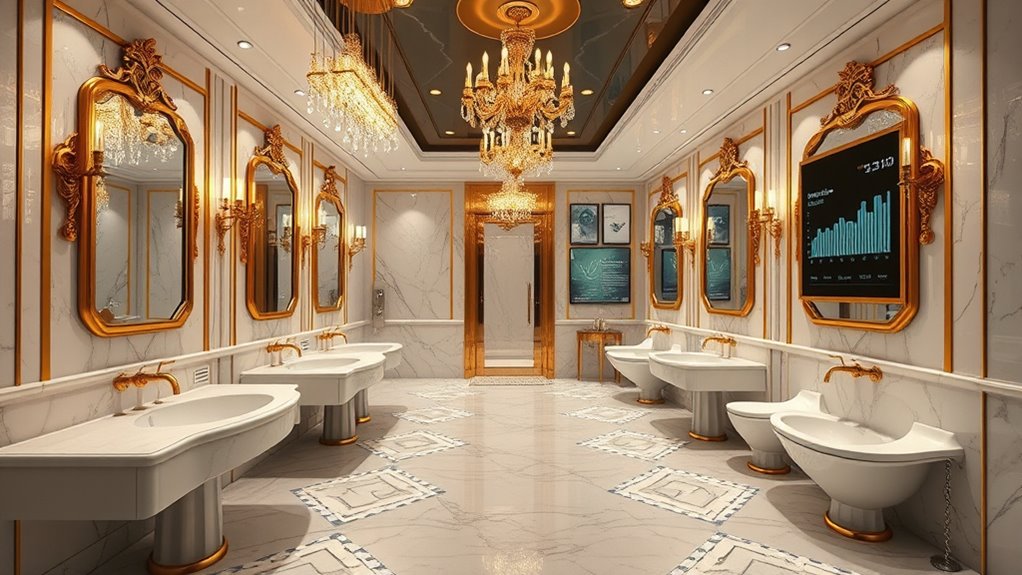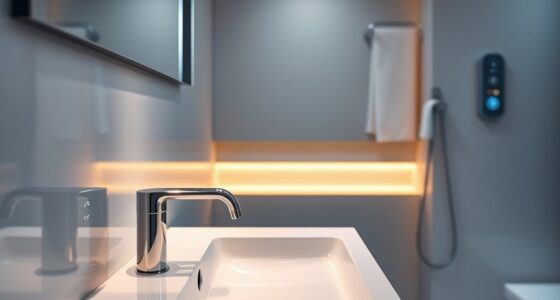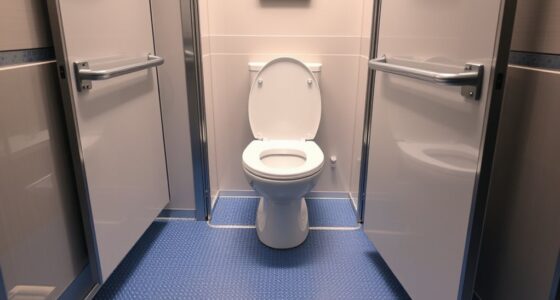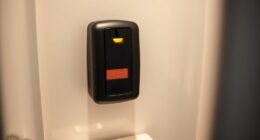When accounting for luxury restroom investments, depreciation schedules help you spread the costs over their expected useful life, maximizing tax benefits and guaranteeing compliance. You’ll choose the right method—like straight-line or accelerated depreciation—to align expenses with asset usage. Accurate schedules improve your financial reporting and help plan your deductions. Staying informed on proper depreciation practices ensures you get the most benefit while avoiding penalties—keep exploring to learn more about optimizing your strategy.
Key Takeaways
- Determine the asset’s useful lifespan to select an appropriate depreciation schedule, such as straight-line or accelerated methods.
- Apply depreciation consistently over the asset’s lifespan to accurately reflect expense recognition and asset valuation.
- Ensure compliance with IRS regulations for capital improvements and luxury fixtures to maximize tax deductions legally.
- Accelerated depreciation methods can provide higher deductions in early years, improving cash flow and tax planning.
- Regularly review and update depreciation strategies to align with current tax laws and asset usage.

Have you ever wondered how businesses spread out the cost of a tangible asset over its useful life? This process, known as depreciation, allows companies to allocate the expense gradually, which can profoundly impact their financial statements and tax obligations. When you invest in a luxury restroom or any high-end fixture, understanding depreciation schedules is essential because they determine how you can claim tax deductions over time. Instead of deducting the entire cost upfront, depreciation spreads the expense across the asset’s lifespan, aligning expense recognition with the asset’s actual use and wear. This approach not only provides a more accurate picture of your business’s financial health but also offers potential tax benefits, as each depreciation expense becomes a deductible amount reducing taxable income.
The asset lifespan plays a pivotal role here. Businesses need to determine how long an asset like a luxury restroom is expected to provide value. This lifespan influences the depreciation schedule, whether you’re using straight-line depreciation, which spreads costs evenly, or accelerated methods that front-load deductions in the early years. Knowing the asset lifespan helps you forecast your expenses more precisely and plan your tax strategy effectively. For instance, if your restroom is expected to last ten years, you’ll allocate an equal portion of its cost each year, simplifying your bookkeeping and tax calculations. Conversely, if you opt for accelerated depreciation methods, you might claim larger deductions in the initial years, providing immediate tax relief and freeing up cash flow.
Properly managing depreciation schedules guarantees you maximize tax deductions without risking non-compliance with tax laws. The IRS and tax authorities have specific rules about how assets should be depreciated, especially for luxury fixtures that might be considered capital improvements. By establishing an accurate asset lifespan and choosing the right depreciation method, you can optimize your deductions while adhering to legal standards. Additionally, understanding the types of depreciation available can help you select the most beneficial approach for your financial situation. This process also helps you avoid overestimating or underestimating expenses, which could lead to audit issues or missed opportunities for savings.
Frequently Asked Questions
How Do Depreciation Methods Vary Across Different Jurisdictions?
You should know that depreciation methods vary across different jurisdictions due to international variations and legal considerations. Some countries favor straight-line depreciation, while others allow accelerated methods like declining balance. These differences impact your accounting practices and tax liabilities, so it’s vital to understand local laws and regulations. By adapting to these variations, you guarantee compliance and optimize your asset management strategies in each jurisdiction you operate within.
Can Depreciation Schedules Be Adjusted After Initial Setup?
While depreciation schedules might seem fixed, you actually have some flexibility. You can modify them if your circumstances change, especially with asset reevaluation frequency in mind. This flexibility allows you to better match depreciation to actual usage or market value, but keep in mind that changes should comply with accounting standards. So, yes, you can tweak your depreciation schedule after initial setup, but always ensure proper documentation and adherence to regulations.
What Are the Tax Implications of Accelerated Depreciation?
Accelerated depreciation for a luxury asset like high-end restroom equipment can substantially boost your tax benefits by allowing you to deduct more in the early years. This strategy reduces your taxable income temporarily, providing immediate cash flow advantages. However, you should be aware that it may lead to higher taxes later when depreciation slows. Always consider your long-term financial plans and consult a tax professional to maximize these benefits.
How Often Should Depreciation Schedules Be Reviewed or Updated?
You should review your depreciation schedules regularly, ideally annually, to make certain they reflect your asset’s current useful life and actual asset lifespan. Changes in usage or technology can impact depreciation rates, so updating schedules helps you stay compliant with tax laws and accurately account for your assets. Regular reviews also maximize tax benefits and prevent errors, ensuring your financial statements remain precise and reflect the true value of your investments.
Are There Specific Accounting Standards for Luxury Restroom Assets?
You might wonder if luxury amenities like high-end restrooms follow specific accounting standards. While general standards such as IFRS or GAAP guide asset valuation and depreciation, there aren’t unique rules solely for luxury restroom assets. These assets are valued and depreciated based on their useful life and market value, ensuring accurate reflection of their worth over time. So, focus on applying standard accounting principles to maintain proper asset valuation.
Conclusion
Think of depreciation schedules as the roadmap guiding your luxury restroom investment’s journey. By understanding how to allocate costs over time, you steer clear of surprises and keep your financial ship steady. Proper depreciation guarantees your investment stays on course, maximizing value without hitting unexpected reefs. Embrace this tool as your trusted compass, guiding you smoothly through the complexities of accounting. With it, you’ll navigate your investment’s voyage confidently and arrive at your destination with clarity.









